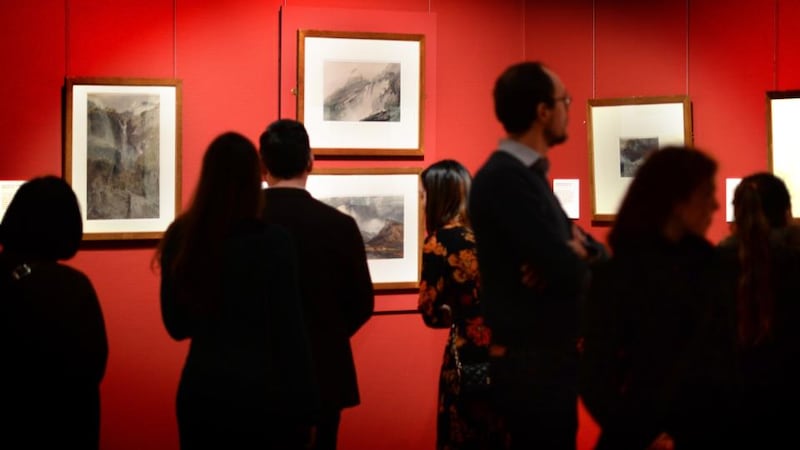The muted lighting, the whispers and admiring sighs, the sense of privilege that hovers in the small, often crowded gallery room, are part of one of the most pleasurable of winter rituals, the annual viewing at the National Gallery of Ireland of some of English artist JMW Turner’s delicately beautiful watercolours.
It is now just over 114 years since the 31 works bequeathed by Henry Vaughan arrived in Dublin, carefully transported in a specially made wooden cabinet. Vaughan, a wealthy art collector, shared his Turner collection between Dublin and the National galleries of London and Scotland.
The National Gallery’s bequest includes “Passau, Germany, at the Confluence of the Rivers Inn and Danube, 1840″, “The Castellated Rhine, c.1852″, “Sunset over Petworth park, Sussex, c.1828″ and “Ostend Harbour, c.1840″ which until recently had been thought to be a view of Great Yarmouth harbour in Norfolk.

A further five donated works feature in the exhibition which, true to tradition, opened yesterday and runs for the month of January when natural light is at its weakest. This was Vaughan’s one stipulation.
Modern conservation has rendered his caution obsolete yet the gallery, by continuing to honour his request, makes the annual display, first exhibited in 1903, all the more alluring.
High priest of colour
Joseph Mallord William Turner (1775-1851), high priest of colour and light, was as radical a visionary as Ludwig van Beethoven who was born five years earlier. The comparison is a valid one.
Turner, the first great impressionist, and a major influence on pioneering French Modernists Monet and Matisse as well as the Russian-born American abstract expressionist Mark Rothko, was a prodigy, fortunate that his beloved father, a Covent Garden wig maker and barber, always believed in him.
For Turner, struggle came from within. Recognised as an artist throughout his life, he first exhibited at the Royal Academy of Arts when he was 15.
His unstable mother eventually died in Bethlem Hospital in 1804 when Turner was 29 and he settled in a fine house on Harley Street living contentedly with his father. His death in 1829 when Turner was 54 devastated the artist who, eccentric and unconventional, shunning marriage and the two daughters born to a mistress, and given to outbursts of unwelcome candour, then became prone to depression. The life was messy, the work glorious. Turner the man has been brought centre stage by Mike Leigh's painterly biopic, Mr Turner, in which Timothy Spall portrays the cantankerous middle-aged man through his hectic final 25 years, busy with increasing abstraction, experimentation and artistic defiance.
Turner is the artist of the sea, of storms and light, of the rage of heaven.
Daring with colour
While Turner was daring with colour and form, energy, and travel through a Europe often paralysed by Napoleon, the Dublin collection brilliantly balances the revered flamboyance of his dramatic seascapes and majestic oils held elsewhere, with the sublime grace of his draughtsmanship as displayed in the Dublin watercolours.












